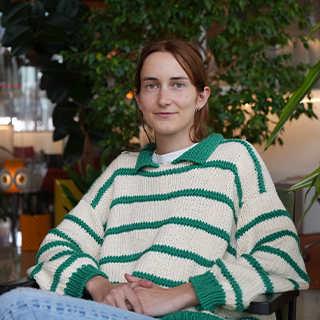
Opinion
Co-living is a new movement of urban living that has community at its core

By Alma Fabiani
Co-living is not a brand new concept, and yet, recently, an improved version of the 1960s movement seems to be making a comeback in major cities across the world. So what is co-living and how has it changed from its previous commune connotation to one of the most innovative ways of using urban space today, attracting an entire host of tenants in search of something that better fits their needs?
Co-living is a form of housing that combines shared communal facilities with private living spaces—it’s basically a home that promotes both social contact through community events alongside much needed personal space and privacy. It’s about time we realise that the future of cities and living needs to undergo a big change, and companies providing co-living spaces like The Collective are putting some fascinating ideas on the table.
When it first opened in 2016, The Collective was the U.K.’s first large-scale co-living space operating in the field. Today, it provides co-living locations in London, in Old Oak and the recently opened Canary Wharf in, New York, and planned sites in Chicago, Miami, and Germany, while operating out of three offices globally. To give a sense of scale for the demand for this new way of living, to date, The Collective has raised $800 million.
Migration to big cities like London and New York is on the rise, which puts the already limited housing stock under pressure. Add to this the unavailability of small and reasonably-priced flats in trendy areas plus the uncertainty of living with strangers, and you’ll quickly realise why co-living is evolving alongside a growing demand for fully furnished houses that offer good facilities and utilities, while also making tenants feel less isolated.
Co-living then tackles the space and the loneliness issues in one swift go, something that has become urgent in the U.K., with inner city people more likely to be lonely than those in any other area, and 23 percent of the population most likely to feel on their own—despite having hundreds of followers on Instagram and however many Facebook friends. Talking to Screen Shot about what led him to create this community-driven living space, founder and CEO of The Collective Reza Merchant said, “I came across how difficult it was to find good quality accommodation whilst I was studying at the London School of Economics. It was hard to find a place that was homely and didn’t isolate me from the community around me. This struck me as a very unnatural way to live, as by nature we’re social creatures. At The Collective we want to reinstate our social needs which is why we’ve made it our mission to build and activate spaces that foster human connection and enable people to lead more fulfilling lives”.
The movement of co-living is offering our ever-changing world new ideas of how we’ll be living in the future. The way we use the space we live in has changed. We’re out during the day, out during the night; we need flexibility in everything we do. And what about those empty flats we leave behind for probably 80 percent of the day? Doesn’t it make sense that we find a way to reduce the sheer mass of empty space? “As we increasingly become global citizens, rather than citizens of just one country, owning a property has become less of a priority. We’re much more concerned with personal fulfillment and shared experiences than material possessions”, Merchant notes, adding that, “Cities are huge playgrounds for this, which is where co-living is making a real difference. We’ve welcomed members from all walks of life, with each getting much more than just a roof over their head. Their shared experiences enrich each other’s lives, whether that be collaborating on work, forming new friendships, falling in love, or just simply hearing different stories over dinner”.
Co-living spaces are curated for a new and specific living experience where it’s all about sharing the right amount of space and the right amount of time with the right amount of people. And what makes The Collective different from other companies operating in the field is that it works to accommodate tenants of various ages, nationalities, and professions through communal events and spaces—creating a melting pot at your doorstep.
The Collective doesn’t stand out just because of the aesthetically pleasing design of its spaces, but, most importantly, due to its new approach toward co-living. It wants you to live in a nice and clean space, yes, but also for you to feel connected to the community and be inspired by the people and the spaces that surround you, so you can get more from your home than just a good night’s sleep and a hot shower.
What’s next on the agenda, then? And what more could we get out of this new concept of living? The lifestyle that companies like The Collective are offering us is a step toward demanding more from where and what we call home. Pretty buildings with gyms, pools, terraces, and TV rooms are not what make this whole concept interesting; rather, it’s the community that can come out of it. To establish a global network of co-living communities that are built on continuous learning, innovation and improvement, The Collective looks at the long-term operation and how it can improve to give you the best co-living experience.
Looking at how people live in communities now, and at how it sometimes works out and sometimes doesn’t, co-living is only at the beginning of its journey. For now, at least, it looks like our bright future is made of shared spaces, communal experiences, and a bit of alone time in a thoughtfully designed private space.
This is the first article of a three-part series looking at co-living and what the future of this new trend will hold. Parts two and three will soon be published on Screen Shot online.




